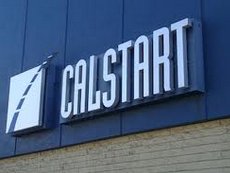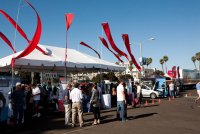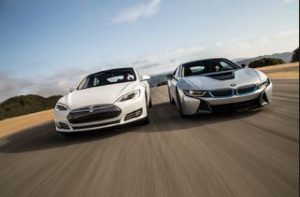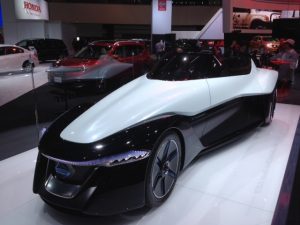 Is the hydrogen fuel cell vehicle the winning technology of the day, or is it plug-in electric vehicles? Natural gas or renewable natural gas? The landscape shaped by regulators, OEMs, infrastructure players, and legislative officials may be evolving into more of a level playing field – according to speakers last week at the CALSTART Annual Meeting and Blue Sky Award ceremony in Los Angeles.
Is the hydrogen fuel cell vehicle the winning technology of the day, or is it plug-in electric vehicles? Natural gas or renewable natural gas? The landscape shaped by regulators, OEMs, infrastructure players, and legislative officials may be evolving into more of a level playing field – according to speakers last week at the CALSTART Annual Meeting and Blue Sky Award ceremony in Los Angeles.
Automakers have given up fighting federal and state standards for fuel efficient, reduced carbon vehicles – replacing it with competition for leadership in a wide spectrum of alternative fuels and advanced vehicle technologies. “The industry is spending billions on technology,” said keynote speaker Christopher Grundler, director, office of transportation and air quality at the US Environmental Protection Agency. “They have to do their job to achieve fair competition.”
This perspective was complemented by Janea Scott, commissioner at the California Energy Commission, during an afternoon speaker panel on private-public investment partnerships. “You don’t want to pick a winner technology,” Scott said. “You want to receive proposals and make the best decision. We’re creating a bigger pond with more competition.”
Speakers acknowledged that the regulatory environment is certainly very challenging with California’s AB 32, low carbon fuel standards, and cap and trade credits; the status of Renewable Fuel Standard rules and credits; phase two of federal standards for heavy-duty vehicle fuel economy and emissions coming up; details on the US-China greenhouse gas emissions agreement being decided next year; and air pollution from goods movement and its impact on disadvantaged communities and others working at, and living near, ports and major interstate highways.
CALSTART’s founding chairman and current president of the California Public Utilities Commission (PUC), helped put things in perspective. When he served as president of Southern California Edison during CALSTART’s creation in 1992, Michael Peevey said that all of the targets being hashed out by states and federal agencies seemed unattainable back then. Now the decisions are becoming more intricate, he said – such as whether the PUC should lift its ban on electric utilities deploying their own electric vehicle charging stations.
The tension between California and the federal government (and automakers) was more of a battleground in the early days of CALSTART, but that is getting worked out. Grundler made some humorous comments about it while participating on another panel with Richard Corey, executive director of the California Air Resources Board; that came across in his comments on California considering itself its own sovereign nation and having to accept that fact that its slipped from the seventh largest economy in the world to the eleventh.
Another colorful moment came up when Dave Barthmuss accepted a Blue Sky Award for his company, General Motors. Barthmuss acknowledged that he did look familiar to people from having been featured as the GM spokesman in “Who Killed the Electric Car?” While Barthmuss looked like one of the bad guys is that influential movie, things seemed to have changed. After taking the award for GM’s full suite of plug-in vehicles and its clean manufacturing, he was pleased to share his own pride in being an electric vehicle driver and for being part of efforts to get CALSTART employees to start driving Chevy Volts to work.
The other winners of the Blue Sky Award were: California State Senator Fran Pavley became the first-ever second-time award winner for several accomplishments over the years, more recently for leading the creation of incentive programs to move clean transportation forward including bringing cap and trade funds to mobile sources. California State Senator Ricardo Lara was honored for leading Senate Bill 1204 that will help reduce pollution in communities living near freight corridors and ports, particularly in disadvantaged communities. California Assemblyman Henry Perea was acknowledged for his leadership role with Senator Pavley on the passage of Assembly Bill 8 to extend clean transportation incentive programs through 2023. Award winners acknowledged CALSTART for its role in getting important bills passed in Sacramento, and for helping their implementation go forward. (And many thanks to CALSTART for inviting Green Auto Market to serve as a supporting organization for the event.)
Frito-Lay was given a Blue Sky Award for its large-scale commitment to alternative fuels; the company has made a strong investment in compressed natural gas and electric vehicles to its fleet and with its partners. Caterpillar Inc. was honored for developing and commercializing its Off-Road Large Size Hydraulic Hybrid Excavator. The hydraulic hybrid excavator captures and reuses energy that would normally be lost during earthmoving operations and reduces fuel consumption and CO2 emissions.












